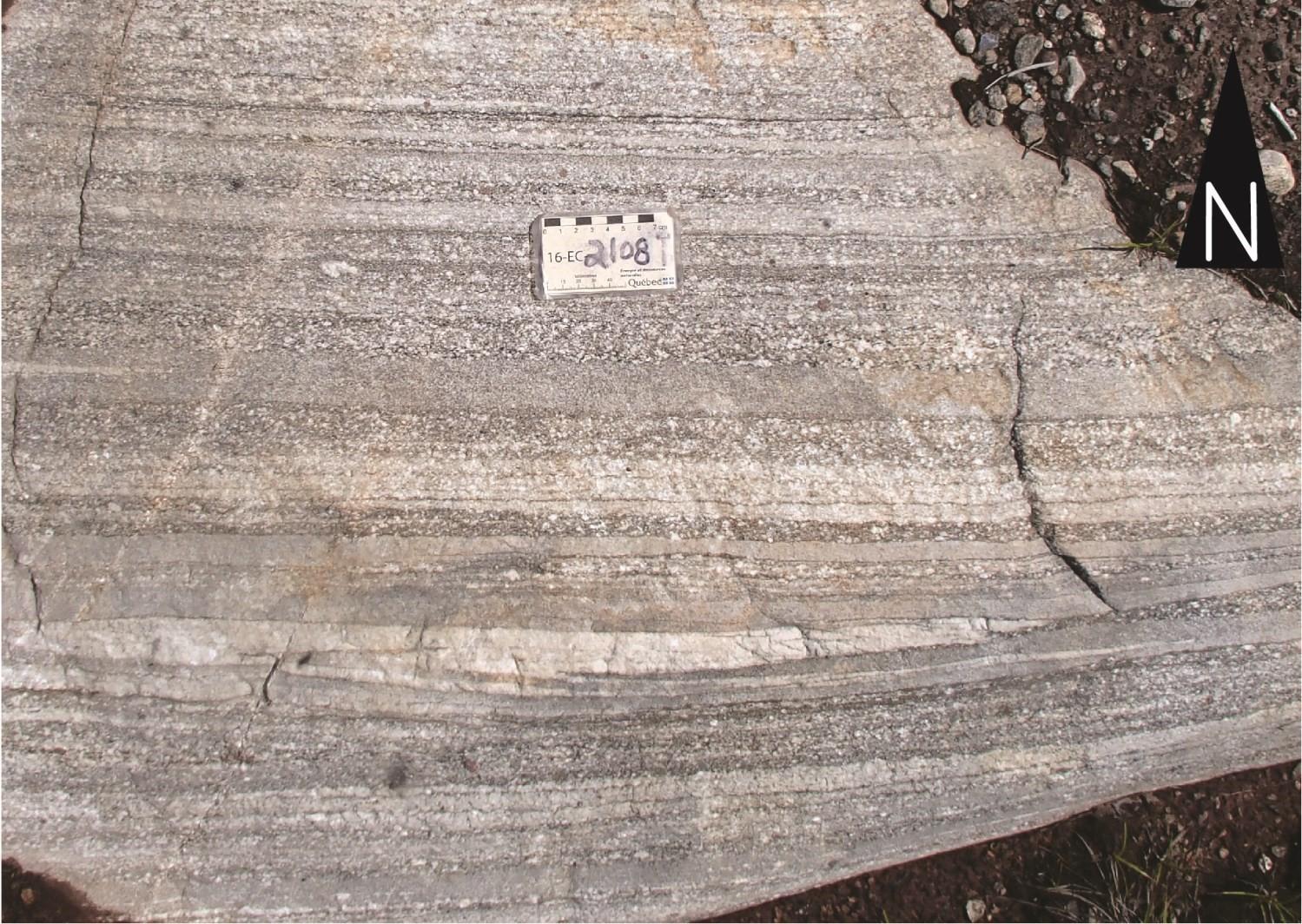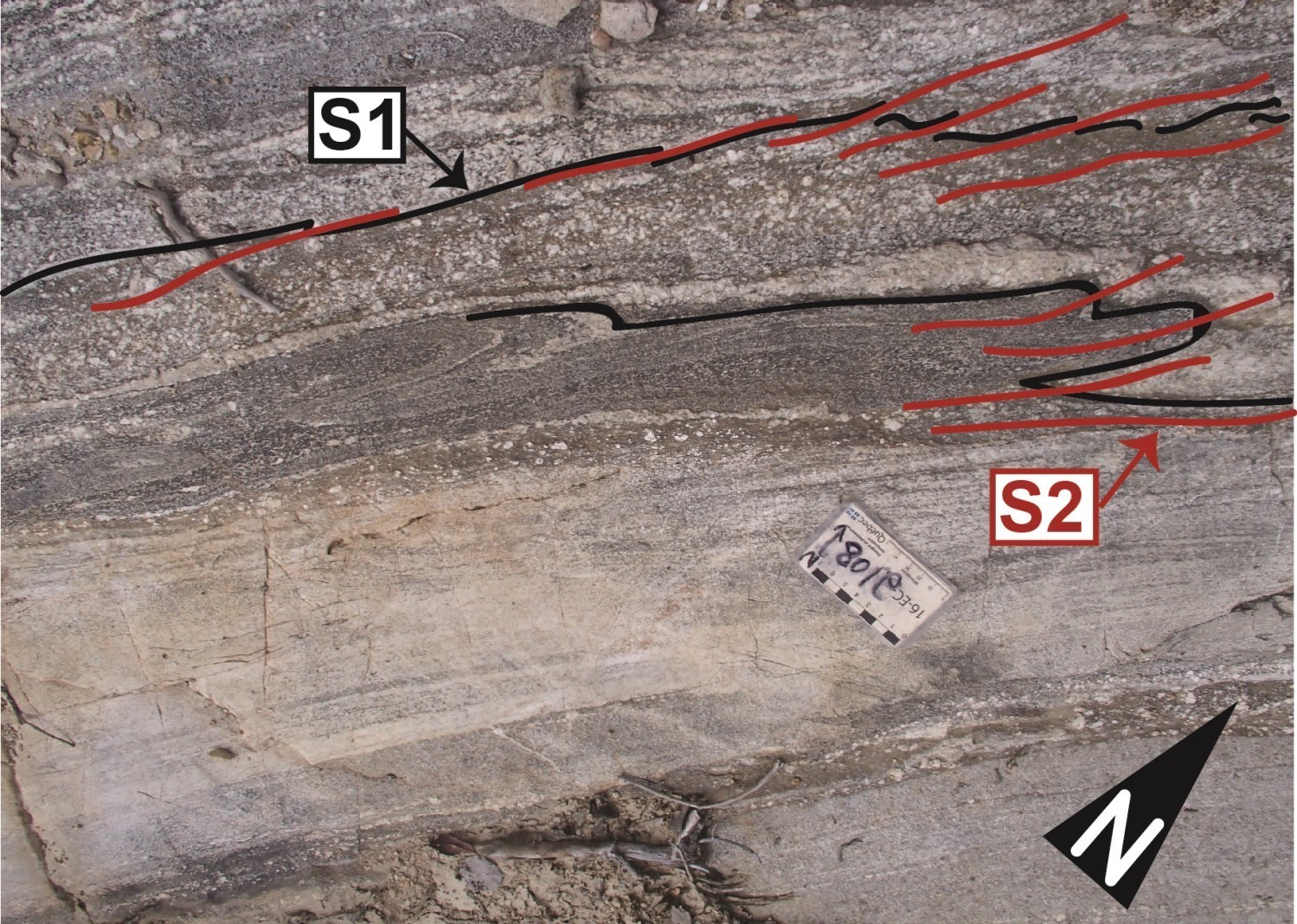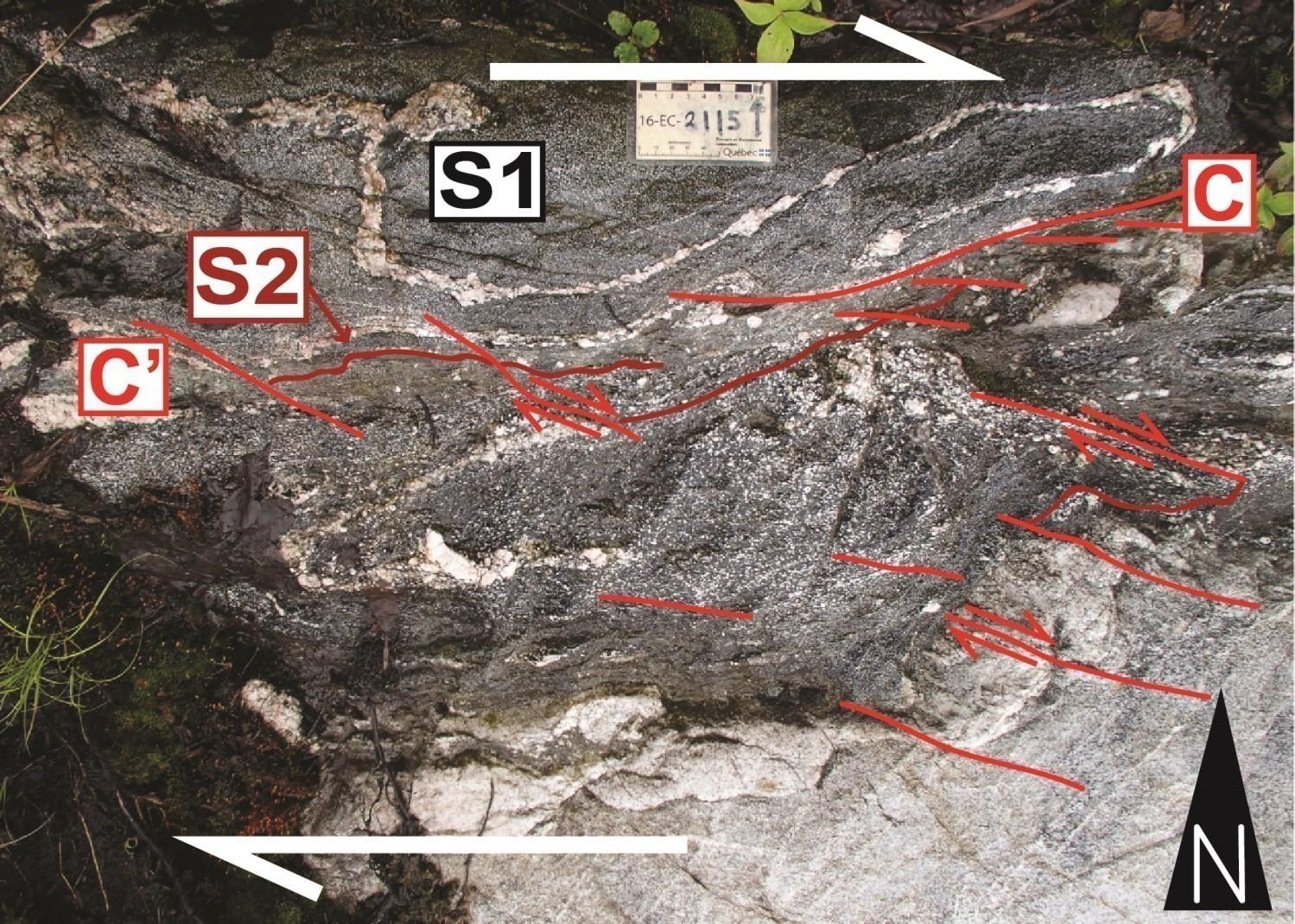
Last modified:
Translation of original French
| Author: | Leclerc and Caron-Côté, 2017 |
| Age: | Precambrian / Archean / Neoarchean |
| Reference section: | |
| Type area: | Dioritic gneisses of the Chensagi Suite are the main lithology of the Poncheville (NTS sheets 32K02, 32K07) and Amisquioumisca (NTS sheet 32K08) lakes area. This unit dominates the central part of the Opatica Subprovince. |
| Geological province: | Superior Province |
| Geological subdivision: | Opatica Subprovince |
| Lithology: | Dioritic to tonalitic gneiss and foliated tonalite |
| Unit type: | Lithodemic |
| Rank: | Suite |
| Status: | Formal |
| Use: | Active |
None
Background
The Chensagi Suite corresponds to the « gray gneiss » unit of Sawyer and Benn (1993) which dominates the central part of the Opatica Subprovince. This unit was designated « Aopa2 » during the mapping of the Olga Lake and Goéland Lake areas, north of Matagami (Goutier et al., 2004; Goutier, 2006).
Description


 The Chensagi Suite is mainly composed of gneisses of dioritic to tonalitic composition and foliated tonalites. Gneisses are fine to medium grained and have a greyish to brownish gray patina, hence the use of the term « gray gneiss » used by Sawyer and Benn (1993) to refer to these rocks. Gneissosity is defined by the alternation of millimetric to centimetric bands of quartzofeldspathic composition (positive relief) and melanocratic bands rich in biotite and/or hornblende (negative relief). Melanocratic bands also contain magnetite, epidote and hematite. Some outcrops show tonalitic gneisses with melanocratic bands containing millimetric garnet porphyroblasts. Locally, the rock develops a migmatitic structure.
The Chensagi Suite is mainly composed of gneisses of dioritic to tonalitic composition and foliated tonalites. Gneisses are fine to medium grained and have a greyish to brownish gray patina, hence the use of the term « gray gneiss » used by Sawyer and Benn (1993) to refer to these rocks. Gneissosity is defined by the alternation of millimetric to centimetric bands of quartzofeldspathic composition (positive relief) and melanocratic bands rich in biotite and/or hornblende (negative relief). Melanocratic bands also contain magnetite, epidote and hematite. Some outcrops show tonalitic gneisses with melanocratic bands containing millimetric garnet porphyroblasts. Locally, the rock develops a migmatitic structure.
Biotite and hornblende foliated tonalite has a fine to medium grain size and has a beige to pale gray, sometimes pink, patina and a gray to pinkish gray fresh fracture surface. It contains 10 to 40% biotite and hornblende. Accessory minerals locally observed are pyrite, magnetite and muscovite. Epidote, chlorite and hematite appear as alteration minerals. Gneisses of dioritic to tonalitic composition, as well as foliated biotite and hornblende tonalites, contain xenoliths of foliated medium grained amphibolite and diorite.
Thickness and distribution
Given the incomplete map coverage of the Opatica Subprovince, it is not yet possible to establish precisely the extent of the Chensagi Suite in the Opatica Subprovince. This unit is currently recognized in the Olga Lake (NTS sheets 32F14 and 32K03), Goéland Lake (NTS sheet 32F15) and Amisquioumisca Lake (NTS sheets 32K01, 32K02, 32K08, 32K09) areas.
Dating
Dating has been done by Davis et al. (1995) on samples collected along two traverses north of Matagami and Chibougamau. Tonalite sample OP300, collected west of Evans Lake (NTS sheet 32K13), gave an age of 2773 ±23 My, interpreted as the precursor age, and a metamorphic age of 2718 ±3 My. Biotite tonalitic gneiss sample OP170, collected southwest of La Vallière Lake (NTS sheet 32J08), gave a crystallization age of 2761 +42/-15 My.
| Isotopic System | Mineral | Cristallization Age (My) | (+) | (-) | Inherited Age (My) | (+) | (-) | Reference(s) |
| U-Pb | Zircon | 2773 | 23 | 23 | 2718 | 3 | 3 | Davis et al., 1995 |
| U-Pb | Zircon | 2761 | 42 | 15 | Davis et al., 1995 |
Stratigraphic Relationship(s)
Dioritic and tonalitic gneisses of the Chensagi Suite are the oldest lithodemic unit in the region. They include xenoliths of volcanic and sedimentary rocks that are probably associated with the Broadback Group or the Rocher Complex. They are commonly intruded by biotite granites that belong to the Nottaway Pluton or the Pinède Grise Pluton. They are also cut by mafic dykes of the Chef Dyke Swarm, the Senneterre Dykes and the Paleoproterozoic Biscotasing Dykes.
Paleontology
Does not apply.
References
| Author(s) | Title | Year of Publication | Hyperlink (EXAMINE or Other) |
|---|---|---|---|
| GOUTIER, J. | Géologie de la région du lac au Goéland. Ministère des Ressources naturelles et de la Faune, Québec, 39 pages. | 2006 | RG 2005-05 |
| GOUTIER, J. – RHÉAUME, P. – DAVIS, D.W. | Géologie de la région du lac Olga. Ministère des Ressources naturelles, de la Faune et des Parcs, Québec, 42 pages. | 2004 | RG 2003-09 |
| LECLERC, F. – CARON-CÔTÉ, E. | Levé géologique dans la Sous-province d’Opatica au nord-est de Matagami (Région du lac Amisquioumisca). Ministère de l’Énergie et des Ressources naturelles, Québec. | 2017 | Bulletin géologiQUE |
| SAWYER, E.W. – BENN, K. | Structure of the high-grade Opatica Belt and adjacent low-grade Abitibi Subprovince, Canada: an Archean mountain front. Journal of Structural Geology, volume 15, pages 1443-1458. | 1993 | Source |

